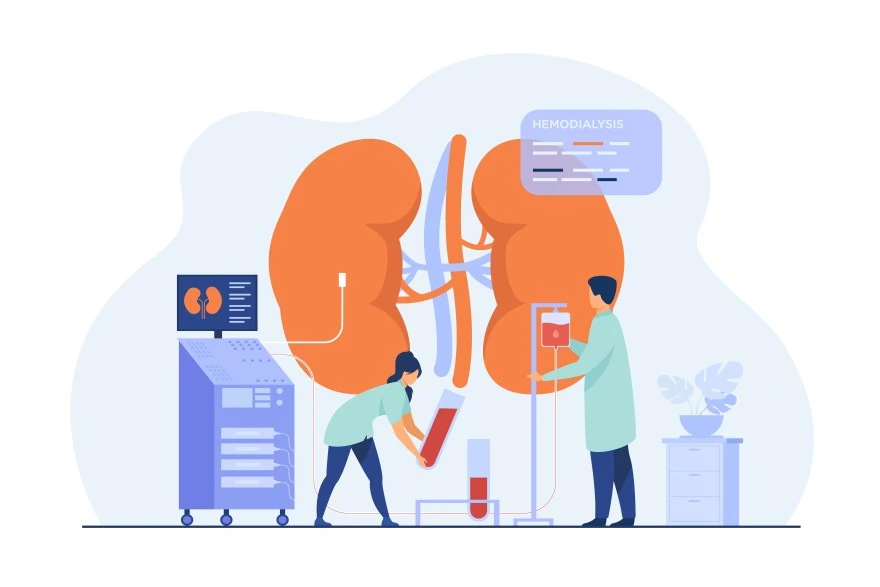Health Wellness
DNA Sequencing: A Powerful Tool In Genomics

Table of Contents
What is sequencing?
A DNA molecule carries information in the form of four chemical groups or bases ie. adenine, cytosine, guanine, and thymidine, represented by the letters A, C, G and T. Nucleic acid sequencing is a method for determining the order of the nucleotide bases in a molecule of DNA. Sanger sequencing (the chain-termination method), developed in 1975 by Edward Sanger, was considered the gold standard for nucleic acid sequencing for the subsequent two and a half decades. Life Technologies has been providing automated capillary electrophoresis platforms for sanger sequencing for almost two decades now.
Importance
Knowledge of DNA sequences has become indispensable for basic biological research, other research branches utilizing DNA sequencing, and in numerous applied fields such as:
- Diagnostic
- Biotechnology
- Forensic Biology
- Biological Systematics.
The advent of DNA sequencing has significantly accelerated biological research and discovery.
The sequencing of the human genome along with related organisms represents has been one of the largest scientific endeavors in the history of mankind. The information garnered from sequencing has provided the raw data for the exploding field of bioinformatics, where computer science and biology live in symbiotic harmony.
Figure 1: 3500Dx is an automated DNA Sequencer/ Genetic Analyzer from Applied Biosystems. It is an In Vitro Diagnostic Medical Device, specifically suited for clinical market for detection of genetic changes that may indicate disease presence or susceptibility..
Figure 2: Electropherogram – is the computer generated output of automated sequencing. The peaks represent the intensity of the fluorescent ddNTPs. The sequence is printed across the top of the peaks. The DNA nucleotides G, A, T, C are represented by black, green, red and blue peaks respectively.
Role of Human Genome Project
Due to immense potential of DNA sequencing, The Human Genome Project, an international research effort to determine the sequence of the human genome was drafted to identify the genes that it contains. The ultimate goal of the Human Genome Project was to decode, letter by letter, the exact sequence of all 3.2 billion nucleotide bases that make up the human genome. This means constructing detailed genetic and physical maps of the human genome. The Project was coordinated by the National Institutes of Health and the U.S. Department of Energy. Additional contributors included universities across the globe. The Human Genome Project formally began in 1990 and was completed in 2003, 2 years ahead of its original schedule.
Impact of Next Generation sequencing in Genomics
The requirement for electrophoretic separation of DNA fragments for reading DNA sequence content in Sanger-based sequencing was the primary bottleneck for throughput with this method, increasing time and limiting the number of reactions that can be run in parallel. Next generation” or “deep” sequencing (NGS) refers to a new, versatile technology of DNA sequencing that permits high-throughput, highly adaptable whole genome-scale assays at reasonable cost and high accuracy.
NGS Platforms for Genomic Research and Diagnostics
The NGS platforms market is dominated by Illumina, which occupies the largest market share. Other companies with commercial platforms include Life Technologies (Thermo Fisher Scientific) (U.S.), 454 Roche (U.S.), and Pacific Biosciences (U.S.). The recently introduced platforms such as HiSeq X Ten and NextSeq 500 from Illumina will drive the market. Based on steps in the NGS workflow, the overall next generation sequencing market has three major segments, namely, pre-sequencing, NGS platforms and services, and NGS data analysis, storage and management. With NGS based assays there is a shift towards data analysis rather than the technical component.
Applications
NGS technology finds applications in research as well as diagnostic fields. Whole genome sequencing, investigation of genome diversity, metagenomics, epigenetics, discovery of non-coding RNAs and protein-binding sites, and gene-expression profiling by RNA sequencing are some of the reseach based applications. Discovery of new microorganisms and viruses by using metagenomic approaches, analysis of viral genome variability within the host (i.e., quasispecies), detection of low-abundance antiviral drug-resistance mutations in patients with human immunodeficiency virus (HIV) infection or viral hepatitis are all possible with NGS.
The major clinical diagnostic/ IVD applications of NGS are detection of germline variants in cancer as well as other genetically inherited disorders, BRCA1/2 mutation detection in familial breast and ovarian cancers, non-invasive prenatal testing (NIPT), pharmacogenomics and personalized medicine, HLA typing and preimplantation genetic diagnosis/ screening (PGD/PGS). At metropolis, we are offering a variety of sequencing based assays in the areas of Predictive Diagnostics (e.g. BRCA1/2), Drug Resistance Detection (e.g. HIV Drug Resistance), Genetic Disorders (e.g. Beta Thalassemia), Pharmacogenetics (AbacavirHypersentitivty in HIV-1), Companion Diagnostics (EGFR, Kras Mutation) etc.
Additional Requisites
Besides NGS instrument and technical expertise, NGS workflow demands strong bioinformatic pipeline, bioinformaticians, experienced geneticist for medical remarks and reporting and genetic counseling services for analyzing and interpretation of sequencing data.
At Metropolis, we are offering a variety of sequencing based assays in the areas of Predictive Diagnostics (e.g. BRCA1/2), Drug Resistance Detection (e.g. HIV Drug Resistance), Genetic Disorders (e.g. Beta Thalassemia), Pharmacogenetics (AbacavirHypersentitivty in HIV-1), Companion Diagnostics (EGFR, Kras Mutation) etc.
The Cytogenetic department in Metropolis is certified by CAP (College of American Pathologist) and NABL (National Accreditation Laboratory Testing and Calibration). We adhere to global quality standards.
A wide range of cytogenetic tests are offered under single roof i.e. ranging from blood, bone marrow, POC (product of conception), prenatal and solid tumors. We also offer genetic counseling. Our expertise lies in offering genetic counseling to number of genetic disorders for different conditions and different age group.
- Pre – conceptional, prenatal genetic counseling
- Post natal (pediatric, pubertal, adults) genetic counseling
- Pre-marital genetic counseling
- Counseling in cancer genetics
Research & Development – Our R&D is currently working on the following
- Prenatal: Karyotyping and FISH from Amniotic fluid
- Postnatal: Karyotyping and FISH from blood in various pediatric cases, Infertility, BOH, Products of conception
- Cancer genetics: Karyotyping and FISH in various blood cancers ,solid tumors like breast cancers
- Sperm FISH: In males with abnormal semen analysis report and repeated pregnancy losses with foetal aneuploidies.















